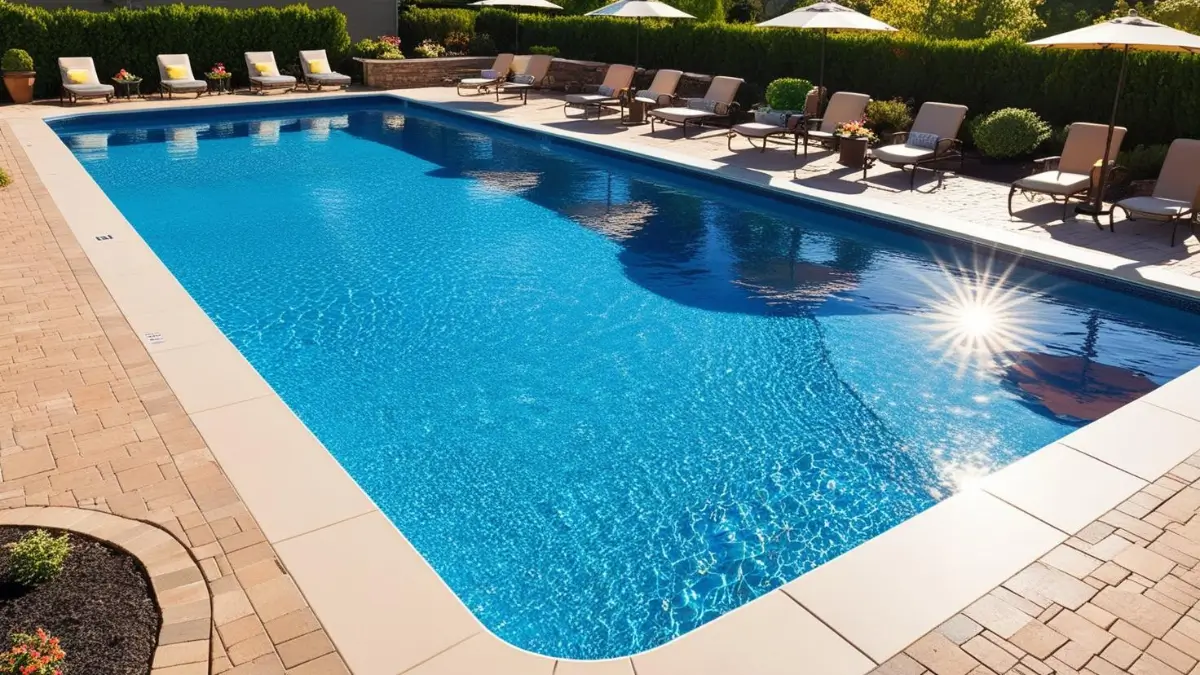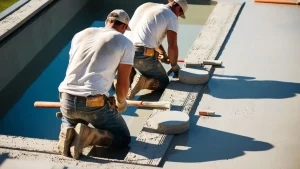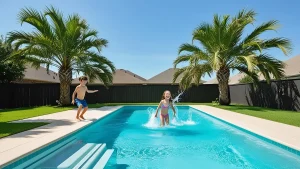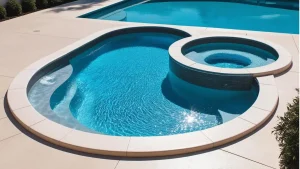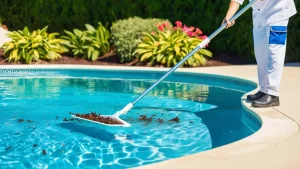Choosing the right fiberglass pool size is important. The size you pick affects how your pool looks, feels and works. This guide will help you explore fiberglass pool sizes, shapes, and depths. Learn how to choose the perfect one for your yard.
What Are Fiberglass Pools?
Fiberglass pools are known for being strong, low-maintenance, and comfortable underfoot. They are made in a factory and come in one big piece. That means you pick from set shapes and sizes, but you get faster installation and lower maintenance.
People love fiberglass pools because they:
- Last a long time
- Don’t need as many chemicals
- Have a smooth surface that feels nice
Common Fiberglass Pool Sizes
The three primary categories of fiberglass pool sizes are as follows:
| Pool Size | Length (Feet) | Best For |
| Small | 10–20 ft | Small yards, plunge pools |
| Medium | 21–30 ft | Families, relaxing and playing |
| Large | 31–40+ ft | Swimming laps, big backyards |
Most composite pools are between 12 to 16 feet wide. You can also choose different depths, which we’ll talk about soon.
Fiberglass Pool Dimensions and Depth Options
When choosing a pool, you should take its depth into account. Both a shallow end and a deep end are common in fabric pools.
Here are some common depths:
| Pool Size | Shallow End | Deep End |
| Small | 3.5 ft | 5 ft |
| Medium | 3.5 ft | 6 ft |
| Large | 4 ft | 8 ft |
Some people like shallow pools for kids. Others want deep pools for diving or exercise. Choose a depth that suits your requirements.
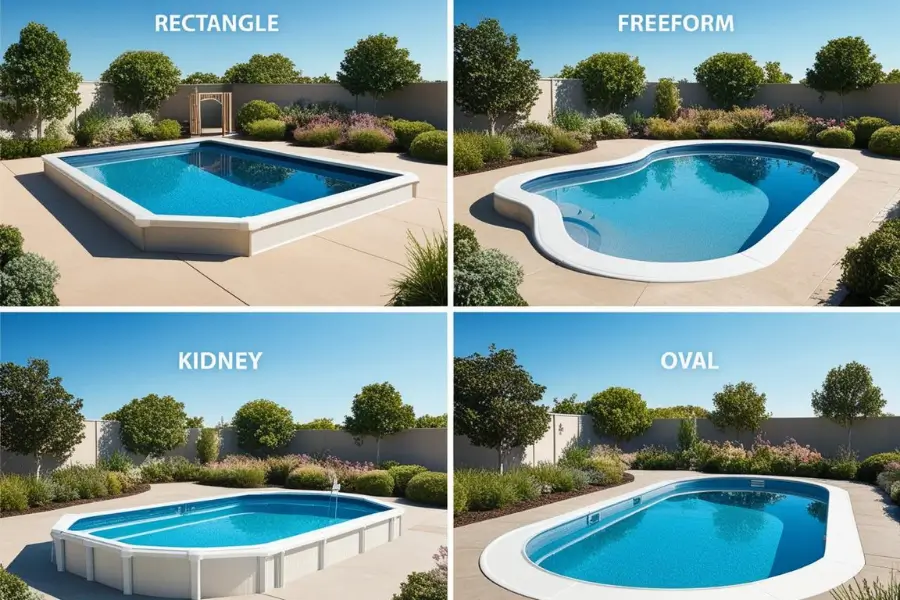
Shapes and Sizes of Fiberglass Pools
Fiberglass pool sizes also depend on the shape. Some shapes use space better than others.
Popular pool shapes include:
- Rectangle – Great for swimming and modern backyards
- Freeform – Curvy shape that looks more natural
- Kidney – A curvy design with room to relax and dive in.
- Oval or Roman – These shapes are timeless and have smooth, gentle curves.
Each shape comes in many sizes. Some pools have special parts for sitting, tanning, or easy entry.
How to Pick the Right Fiberglass Pool Size
Which fiberglass pool size is best? Here’s what to think about:
1. Yard Size
Measure your backyard. Make space for a patio, flowers, and a path to walk on. Don’t try to squeeze a big pool into a small space.
2. Number of Swimmers
How many people will use the pool? A small pool is fine for 1–2 people. For families or parties, pick a medium or large size.
3. Purpose
Do you want to have fun, unwind, or swim back and forth? Small pools are good for relaxing. Big pools are fantastic for workouts and fun.
4. Budget
Bigger pools cost more. Consider how much the pool, water, heating, and cleaning will cost. Select a size based on your spending limit.
Best Fiberglass Pool Sizes for Families
Many families choose a medium-sized fiberglass pool. These pools are big enough for fun but not too large to maintain.
Here are some good size ideas:
| Family Size | Recommended Pool Size |
| 2–3 people | 12’ x 24’ |
| 4–5 people | 14’ x 30’ |
| 6+ people | 16’ x 36’ |
You can also look for pools with benches, splash areas, or shallow lounging spots.
Fiberglass Pool Sizes and Cost
Pool size changes the cost. A bigger pool uses more materials and needs more digging. It also takes more money to heat and clean.
Here’s a simple guide:
| Pool Size | Price Range (Estimate) |
| Small | $25,000 – $40,000 |
| Medium | $40,000 – $55,000 |
| Large | $55,000 – $75,000+ |
Prices depend on where you live and what features you add. Things like lights, heaters, and covers add to the price.
Benefits of Picking the Right Size
Choosing the right fiberglass pool size helps you:
- Use your yard space wisely
- Save money on heating and cleaning
- Enjoy the pool more often
- Avoid making changes later
Planning now is preferable to paying more later.
Frequently Asked Questions
What is the largest fiberglass pool size?
The largest fiberglass swimming pools are around 16 feet in width and 41 feet in length.
Can I get a custom size?
Not really. Fiberglass pools come from pre-made molds. You can pick a shape and size but not create a totally new one.
Are small fiberglass pools worth it?
Yes. Small pools are easy to clean and great for relaxing or tiny yards.
Can fiberglass pools be deep?
Yes, some are 8 feet deep. Deeper pools usually mean higher costs and more work.
Is bigger always better?
No. A pool that fits your space and needs is better than one that’s just big.
Conclusion: Choose the Right Fiberglass Pool Size
Fiberglass pool sizes range from small to large. Each size has its benefits. Consider your family, your yard, and your pool usage habits. The right size makes swimming fun, easy, and worry-free.
Need help picking the best size? Start with your yard size and goals. Then, look at the different shapes and dimensions. You’ll find the perfect pool that fits your life.
Ready to Find Your Perfect Fiberglass Pool Size?
Thinking about a pool? Pools Now make the process easy — from picking the right size to expert installation. Reach out now for a free quote and start building your perfect backyard.
Why Choose Pools Now?
- We offer fast, friendly service.
- Our pools are strong and last long.
- We help you pick the best size.
- Our prices are clear. No hidden fees.
Want to get started? Call Pools Now or visit our website today. We’ll help you pick the right pool and give you a free quote.

